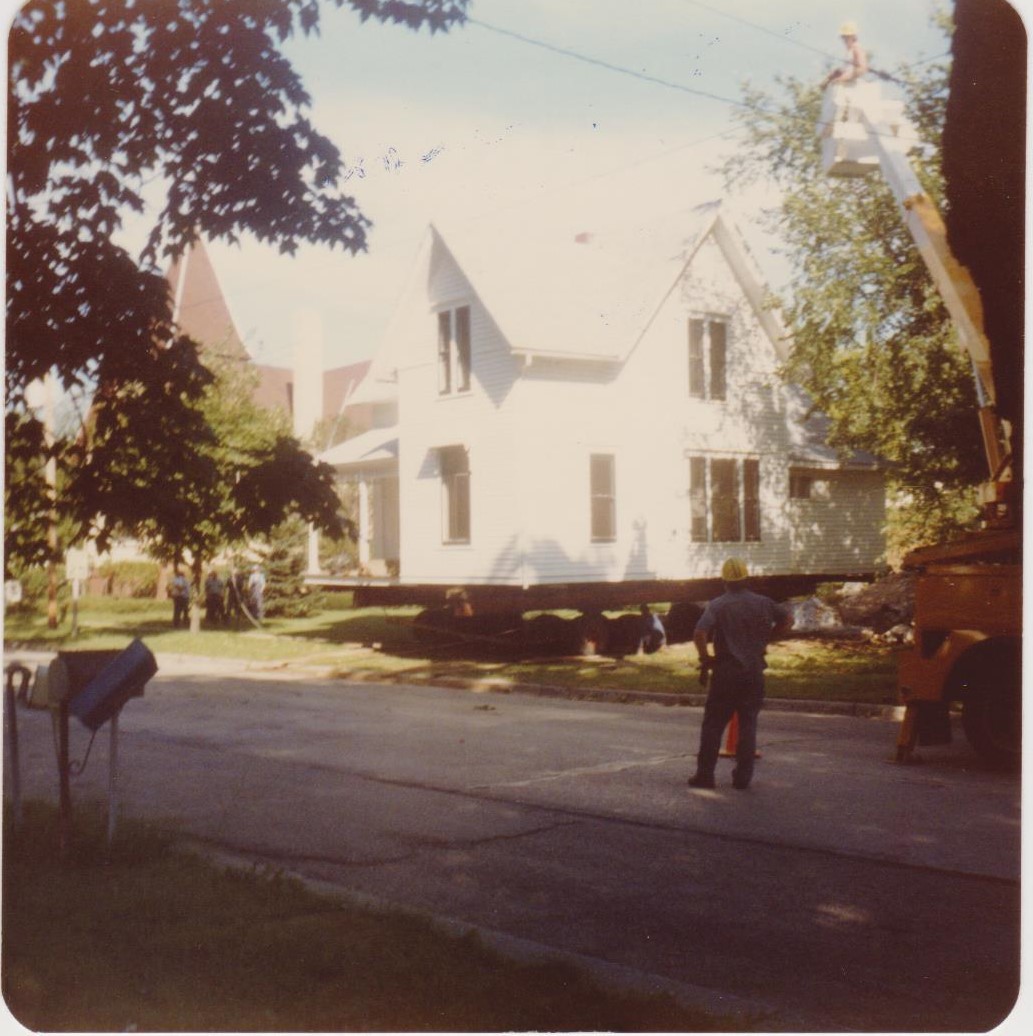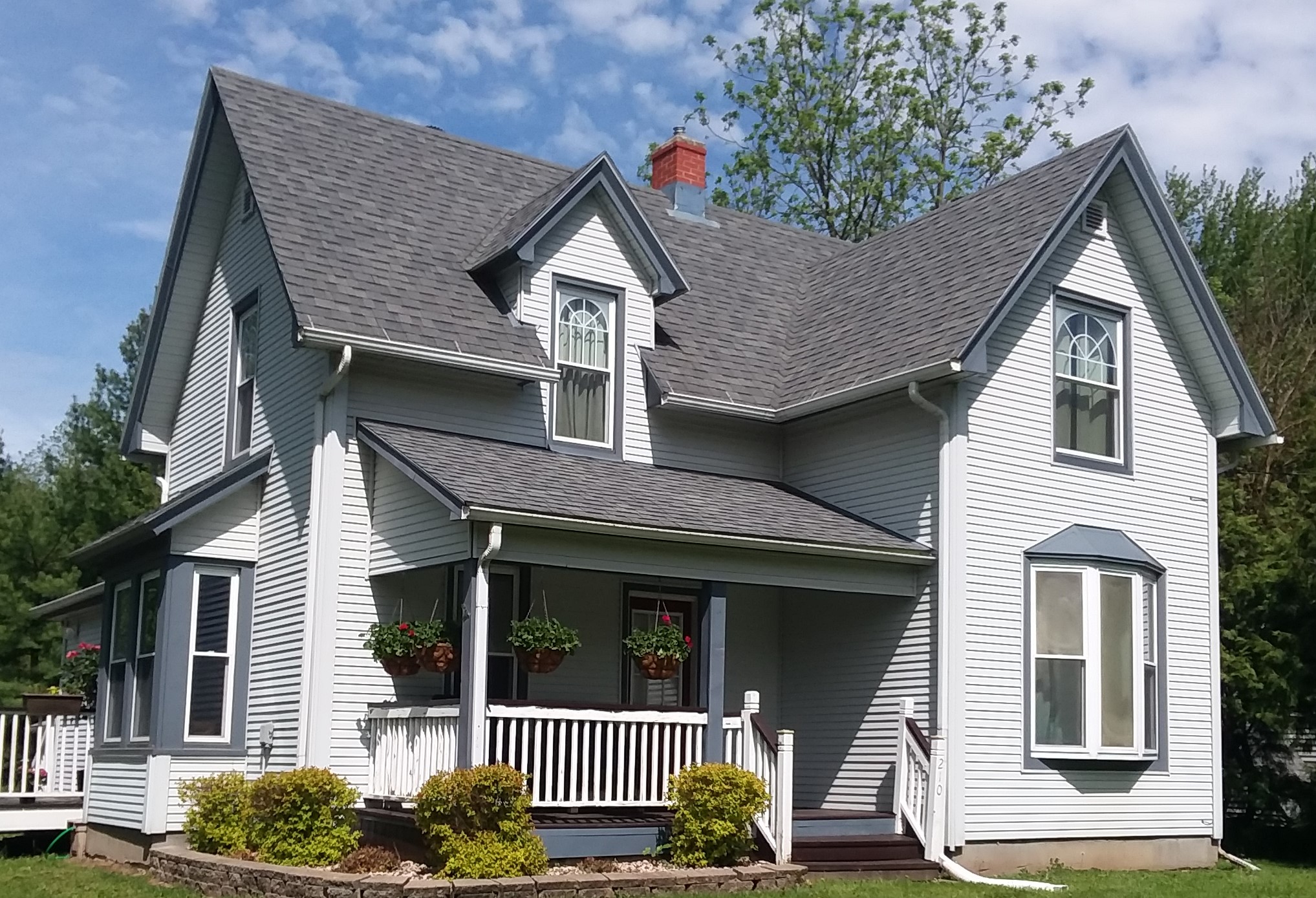Our First Parsonage was built in 1894 on the corner of Church Street and North Rutland, where our present church now stands; which was constructed in 1902.
Earlier speakers at the church traveled from the neighboring towns.
Those in the pulpit were not always ministers, there were lawyers and some elderly gents too. Rev. Robert Sewell traveled 12 miles from Fulton until he was unable to withstand the exposure of the distance. Many stayed overnight either at the Northwester Hotel near the tracks or at somebody’s home.
Reverend William Marsh and his wife, Eva were the first occupants in the parsonage. While here, a thief broke in during the night and stole his watch. Just married before moving here, their financial situation didn’t allow any extras. Showing empathy, the
congregation gathered funds and presented him with a new watch.
Old lamps were replaced with the ‘new modern lighting’ in 1898, thanks to the contributing Ladies Aid. The little white church was becoming crowded, many would come to hear the invited speakers and assigned ministers. The people were getting anxious to build a bigger church. During 1902, our present church became to be.
Getting ready, the parsonage was raised in May of 1902 and moved to the east on the church lot (where the present parsonage sits today). This move allowed the church to be built on the corner, where it stands today. Our first church (built in 1804 and moved
from Union) was sold to the local firm of Richards, Graves & Roberts for $100. Moved by John Warner of Evansville to just one block north to the firm’s recent purchase from Ed Rutty. It was used for storage until the early 1950’s.
The parsonage housed many families that came acquainted with the members of the church and the village. Many couples spoke their marriage vows there. Births, baptisms and funerals occurred there, too. Rev. W.P. McClasky was here during this transition. Bishop Hamilton appointed McClasky to Fort Jones, California, in March 1903 because his wife and children were unable to tolerate the rigors of our cold winters. He wrote and sent letters here during their train ride to California.
One of the fund-raisers towards repairs on the parsonage premises was organized by some elderly gents from the church. This event kicked-off the 1 st Annual Men’s Banquet at the Woodman’s Hall in the village.
Sixty-four years later (1966), the church board decided to look for
different housing, complaints were heard from the present
inhabitants- fuses blew just from ironing, plumbing needs, fixing
in the kitchen, needed painting and stones falling out of the
foundation. Attention was directed to a house across the street
for sale (Wayne/Eunice Ellis). After reading the requirements for a
parsonage from the District, (allow a study, double garage and half
bath) the board talked of using the present parsonage for a study
and Sunday School rooms. Deciding to make the other house the
parsonage, the Women’s Society of Christian Service (WSCS) was
appointed to fund redecorating and the half-bath. Rewiring, half
bath, repairing storm windows, and painting were required. After
getting approval from the congregation, our second parsonage
became located across the street (at 202 Church Street).
Regretfully, the board discovered this newly acquired house needed more repairs. Between the two parsonages, needed repairs swelled. Finally, at a special conference in 1979, it was voted to sell both parsonages.
In May of 1980, Realtor Ed Smith purchased the first parsonage. Again, the house was raised and moved to South Rutland where it stands today, reborn. The parsonage across the street was sold.
Our present parsonage was built in 1980. Rev. Marty Nolet and his family moved in around Christmas.


Parsonage History – As I wrote previously, some marriages were performed at the parsonage, but also in private homes.
● On August 7, 1926, the reverend at Brooklyn Methodist, David H. Johnson and wife, Louise, were invited to Georgina Fish’s residence in Rutland to marry her daughter, Mildred ‘Mili’ Fish, to Arvid Harnack (from Germany). They were not members of the church, but chose our minister for the service. Attending the UW at Madison, Mili met Arvid. Following their marriage, they told her family of plans to move to Germany. Already involved in his own country and here, practicing politics that were percolating in Germany. Studying America’s political beliefs, Arvid was a
government economist. Dedicated to work for his native country as a civil servant, Arvid supplied available information to America from Germany of their preparations, previous to World War II. Loving him and having sentiment in Arvid’s beliefs, she participated; also, within the “Red Orchestra.” On the side, as a cover, Mildred taught literature. This group helped Jews to escape the country and secretly sent valuable information to American supporters, but they themselves stayed. Eventually they were arrested and killed.
● Born in Ireland, the Reverend David Johnson became a citizen in 1896. He served the poor and needy in Pittsburgh before he was affiliated with the Troy Conference in New York and then, transferred to the Wisconsin Conference. Serving Brooklyn
from 1924-28, his daughters, Helene and Greta, were very musical and active in the gardens of the church property as well in the pulpit. David Johnson was quoted as “a man of outstanding personality in the pulpit.” There are many stories within our Methodist history. We are blessed to find people with great faith that have accomplished ‘good things for others.’
Submitted by Sharon George